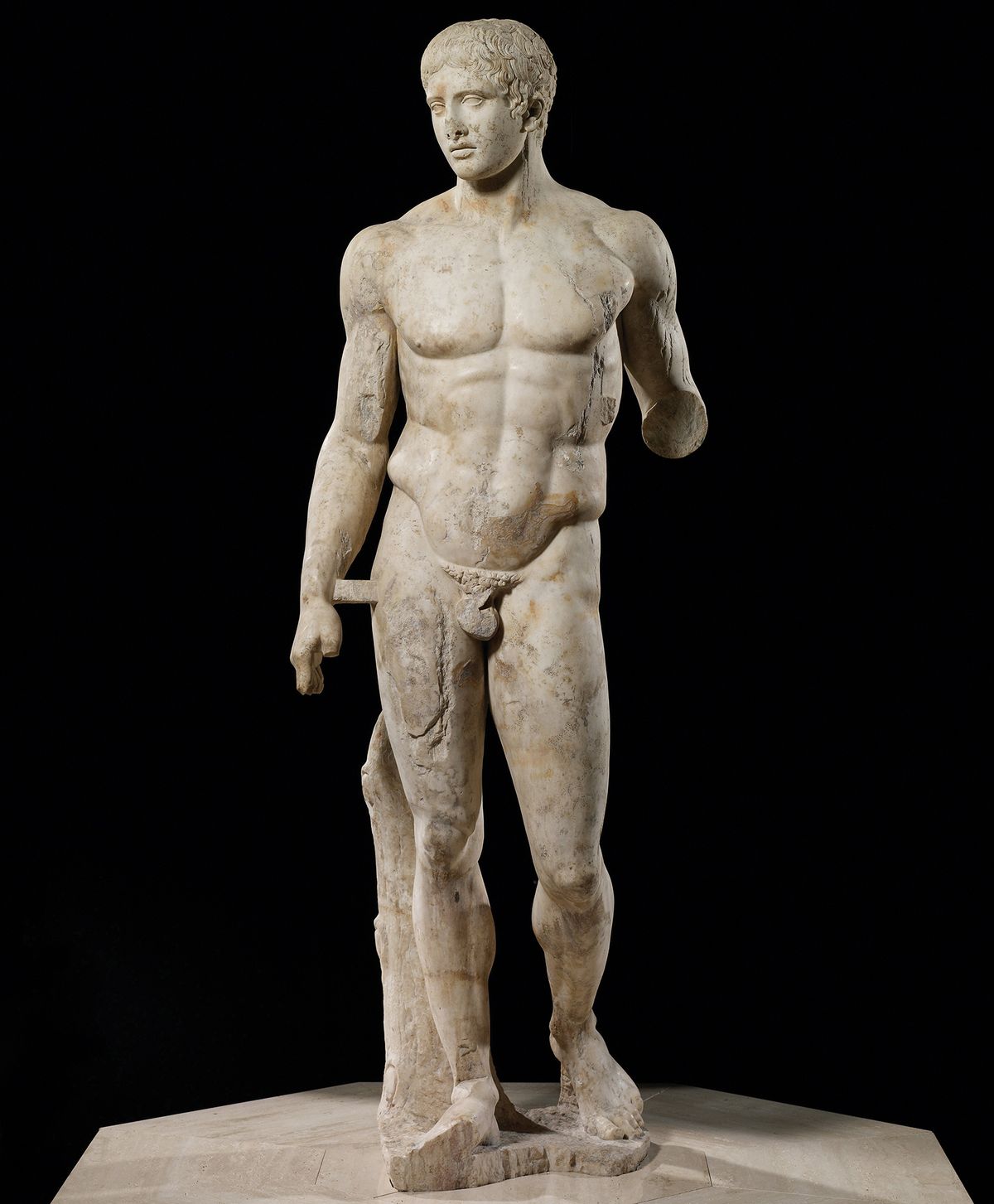Italy has banned art loans to a Minneapolis museum amid a lengthy diplomatic row centred on an ancient marble statue that is believed to have been looted by tomb raiders near Pompeii almost half a century ago.
The statue is a Roman first- or second-century copy in Pentelic marble of a lost bronze by the ancient Greek sculptor Polykleitos depicting Doryphoros, a spear-bearing nude warrior measuring more than six feet tall. The original is often regarded as the perfect embodiment of Polykleitos’s concept of proportion in depictions of the human body, a theory he expounded in his Canon, a now lost treatise.
Italy claims that Doryphoros was looted in the 1970s from the archaeological site at Stabiae, an ancient city that, like nearby Pompeii, was smothered in lava and ash when Mount Vesuvius erupted in AD79. The fragments were then smuggled to Switzerland, Italy claims, and handled by the late Swiss antiques dealer Elie Borowski.
The statue was displayed in a Munich museum in the 1980s and vanished in 1984, before being acquired by the Minneapolis Institute of Art (MIA) in 1986 for $2.5m. MIA insists that the statue was not looted but found off the coast of Italy in international waters, a claim that undermines the country’s claim to the statue.
In February 2022, an Italian magistrate ordered the US museum to return the work. At a conference held at Pompeii in February, exactly two years after the request was made, Nunzio Fragliasso, the chief prosecutor at the court of Torre Annunziata, said: “We are still awaiting a response.”
Speaking at the same conference, Gabriel Zuchtriegel, the director of the Pompeii archaeological site, revealed that Massimo Osanna, the culture ministry’s director of museums, had ordered state museums not to make loans to the Minneapolis museum.
The block was imposed after MIA requested the loan of the Tapestries of the Battle of Pavia—elaborate works by 16th-century Flemish artists that are displayed at the Museo di Capodimonte in Naples— the La Repubblica newspaper reported. Osanna reportedly informed MIA’s director, Katherine Crawford Luber, that the rift over the Doryphoros statue “prevents further collaboration between Italian state museums and the Minneapolis museum”.
Diplomatic strategies
Italy hopes to add the statue to the permanent collection of the archaeological museum in Castellammare di Stabia, near the archaeological site, which reopened after a renovation on 4 March.
In what may have been part of a diplomatic strategy aimed at reaching an agreement on the statue, Florence’s Uffizi Galleries loaned ten works by Botticelli to MIA in 2022, while Palazzo Barberini lent Caravaggio’s Judith Beheading Holofernes (1599) last year. “The ministry has made every effort to find an amicable solution to the issue,” Osanna told La Repubblica.
The approach mirrored that of other countries that have appeared to use art exchanges to ease tensions over contested works. Late last year, the British Museum in London loaned the Meidias Hydria, a painted Greek vase dating from 420BC, to the Acropolis Museum in Athens amid a long-running dispute over the Parthenon Marbles.
Italy has embargoed US museums before. Responding to a parliamentary request in 2020, in a document that has been seen by The Art Newspaper, Italy’s senate stated that the culture ministry had “limited relations” with the Getty Villa Museum in Los Angeles because of the museum’s failure to return the Victorious Youth, a 300-100BC Greek bronze discovered by fishermen off Pesaro, on Italy’s Adriatic coast, in 1964.


